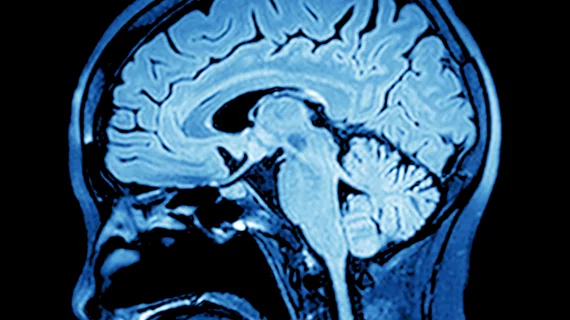AI-powered brain aneurysm project gains big healthcare names
GE Healthcare has joined an Australian AI-powered project aimed improving the diagnosis and monitoring of brain aneurysms. The healthcare company has teamed up with Fujitsu Australia and Macquarie University and Macquarie Medical Imaging, which landed a $1.4 million grant from the Australian government for the research collaboration.
Fujitsu, an IT service management company, is leading the initiative through its AI and digital solutions team with GE Healthcare contributing medical imaging technology. The collaboration hopes to diagnose and monitor brain aneurysms on scans faster and more efficiently through AI, according to the announcement.
“As the consequences of brain aneurysm rupture are often fatal, effective and expedient detection is crucial,” Matt Tucker, president & CEO of GE Healthcare Australia & New Zealand, said in a statement. “Unfortunately, screening and monitoring take time and specialist expertise not afforded by every radiology practice. The application of AI can give doctors better insights more quickly and produce fewer variable results.”
The initiative will first look at creating a commercialized solution distributed through radiology practices in Australia before going worldwide. Fujitsu will use AI methods on images of the brain generated through GE’s Revolution C scanner and a specifically-trained algorithm that looks for abnormalities and aneurysms. The algorithm will be capable of highlighting an arterial ring at the base of the brain that can have one or more aneurysms, and the tech will track aneurysms over time.
“We are pleased to be part of this important ‘co-creation’ initiative that leverages the strengths of each of our partners, as well as Fujitsu’s experience in AI to have a positive impact on peoples’ lives,” said Mike Foster, CEO of Fujitsu Australia and New Zealand. “AI, in particular, has the capability to make our daily lives more comfortable and contribute to solving difficult problems such as detecting serious medical issues early and allowing more timely treatment intervention.”
A second part of the project will include a surgical stent intervention using fluid dynamic modeling to predict the risk of aneurysm rupture.

